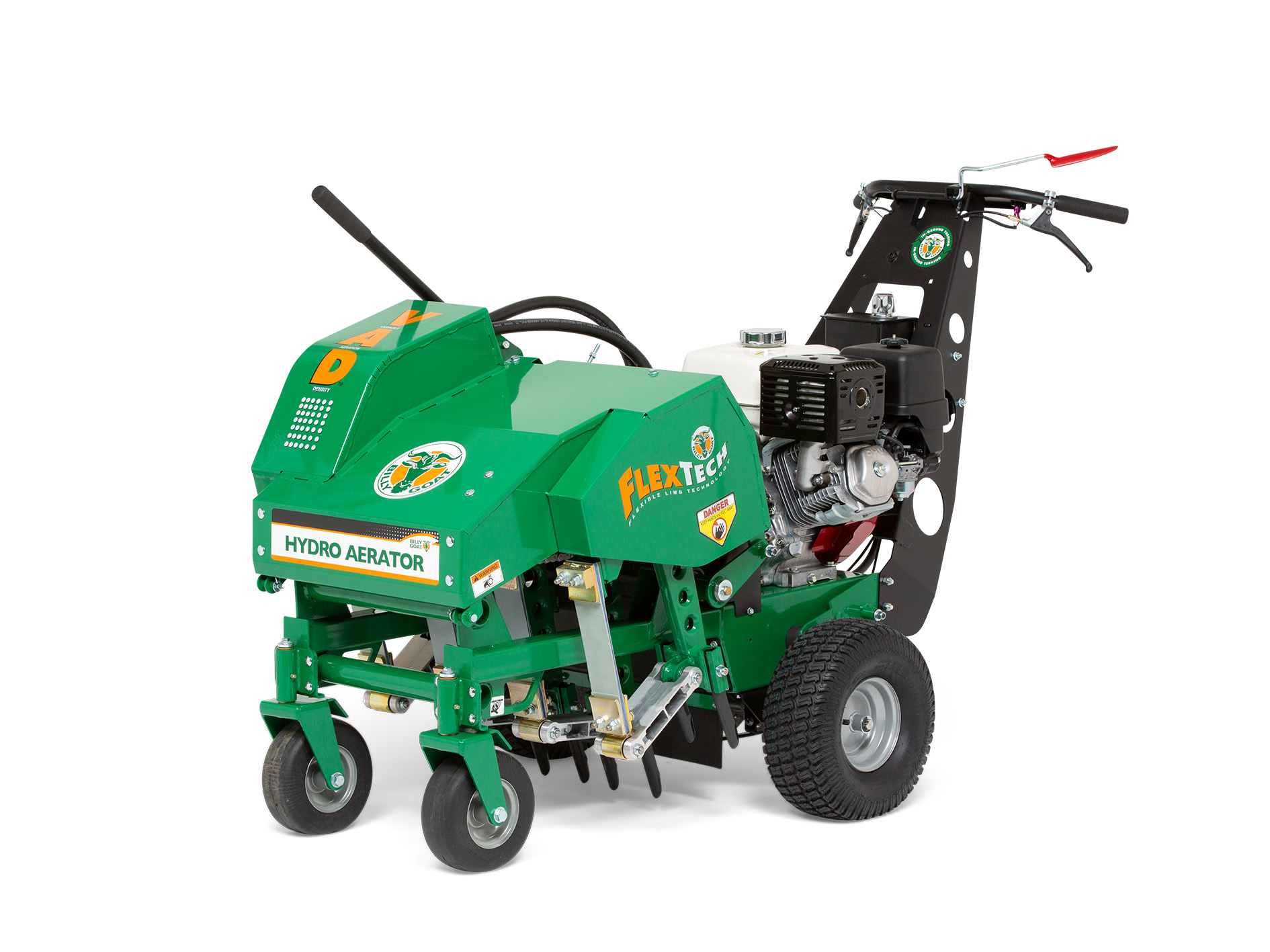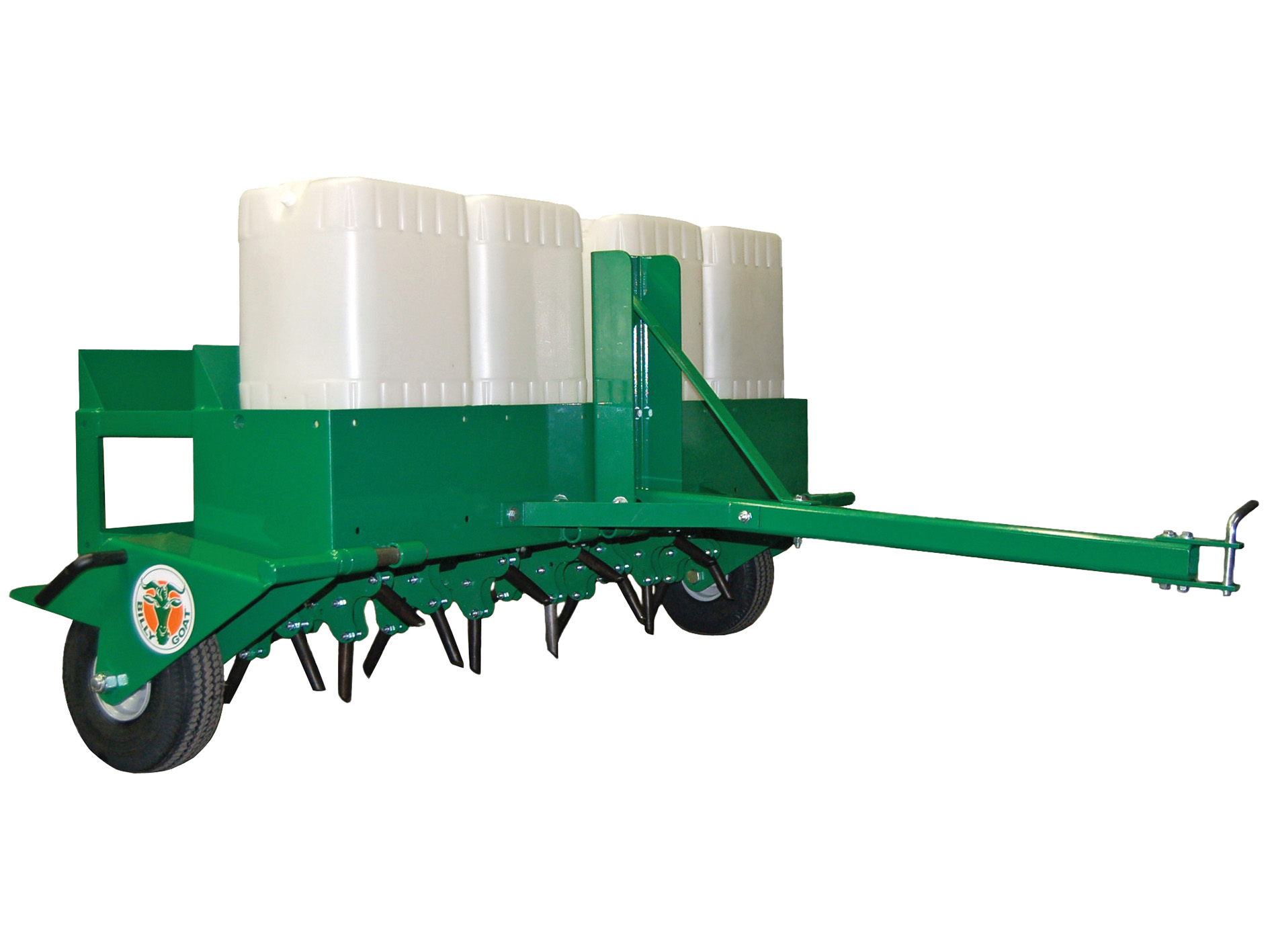B is for Aerating
Aerating is the “B” in the ABC of lawn care. Just as B follows A in the alphabet, aerating builds on scarifying to give your customer’s lawn the care it needs.
Over time, the soil gets compacted by foot traffic, machinery, and weather, creating a barrier that chokes roots and weakens your grass. But don’t worry—aeration is the perfect fix. Curious about how it works and why it’s so effective? Let’s dig in!
What causes soil compaction, and how does it impact your customer’s lawn?
Soil compaction occurs when soil particles are pressed together, reducing pore space and limiting the movement of air, water, and nutrients. This can happen due to:
Foot traffic: Frequent walking or playing on the lawn compresses the soil, especially in high-use areas like pathways or play zones.
Heavy equipment: Mowers, vehicles, or other machinery can compact the soil, particularly in wet conditions.
- Environmental conditions: Heavy rain or a lack of aeration can lead to natural compaction over time.
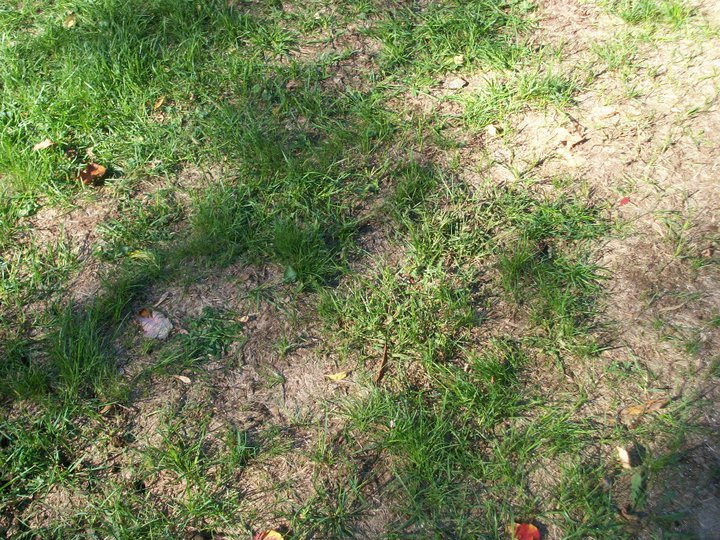
The consequences of compacted soil:
Poor drainage: Water sits on the surface instead of seeping into the soil, increasing the risk of root rot, fungal diseases, and moss growth. Over time, this can suffocate the grass and lead to patchy areas.
Limited nutrient access: Fertilisers can’t penetrate deeply, meaning essential nutrients stay near the surface instead of reaching the root zone.
Weak root systems: Roots struggle to grow deeply, making grass less resilient to stress, drought, and disease. Shallow-rooted grass also struggles to outcompete weeds.
Aerating addresses these issues by perforating the soil, relieving compaction, and creating channels for water, oxygen, and nutrients to flow freely into the root zone. This encourages deeper root growth, stronger turf, and a more resilient lawn.
Aerating in a nutshell
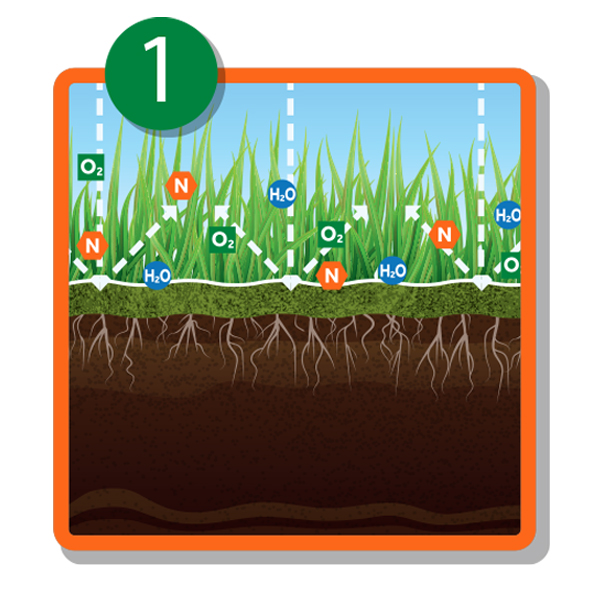
Due to soil compaction, oxygen, nutrients and water can not infiltrate into the soil. This weakens the grass and depletes the root structure.
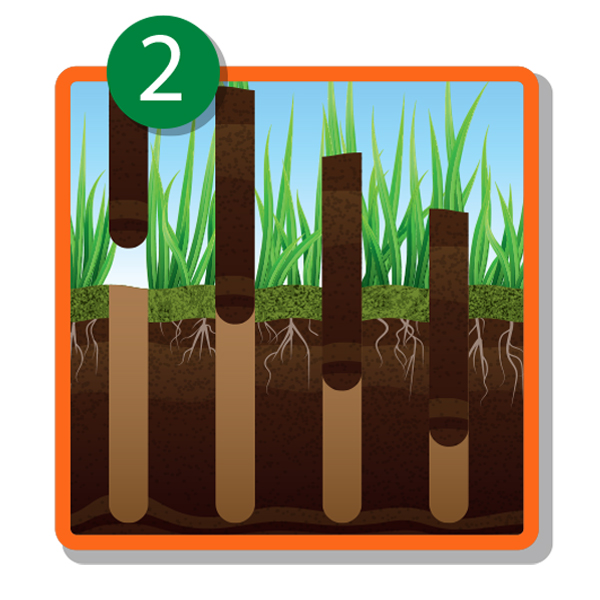
The vertical motion of a tine removes small plugs of soil from the ground.
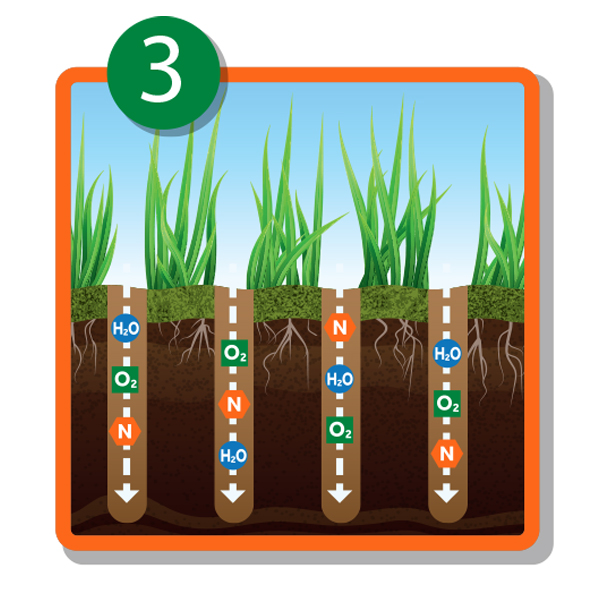
Nutrients, oxygen and water are now able to reach the root structure, creating a stronger lawn.
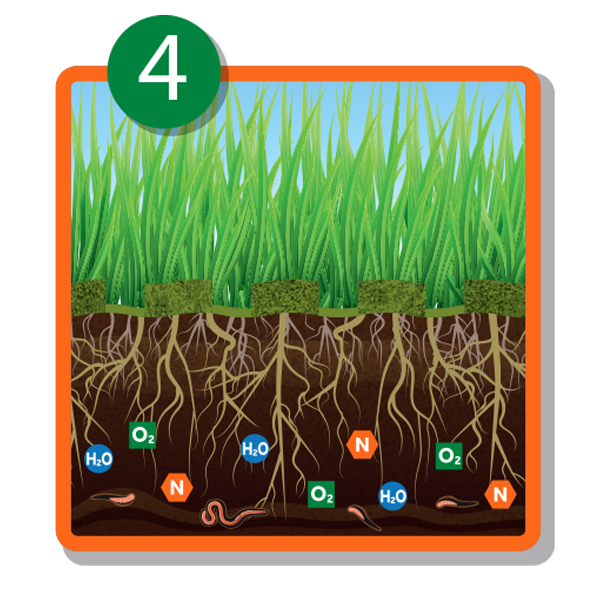
After treatment, the lawn will be lush and more resistant to diseases or droughts.
How to Aerate your customer's lawn?
Aerating may sound technical, but with the right approach and equipment, it’s a straightforward process:
Assess the lawn
Check for signs of compaction, such as water pooling, hard soil, or thin, patchy grass. A simple test is to push a screwdriver into the soil; if it’s difficult, the lawn likely needs aerating.
Choose the right aerator
Billy Goat offers a range of professional-grade aerators to suit different needs:
Walk-Behind Aerators: Ideal for smaller or medium-sized lawns, these are easy to manoeuvre and deliver consistent results.
Tow-Behind Aerators: Designed for larger properties, these units attach to tractors or utility vehicles for maximum efficiency.
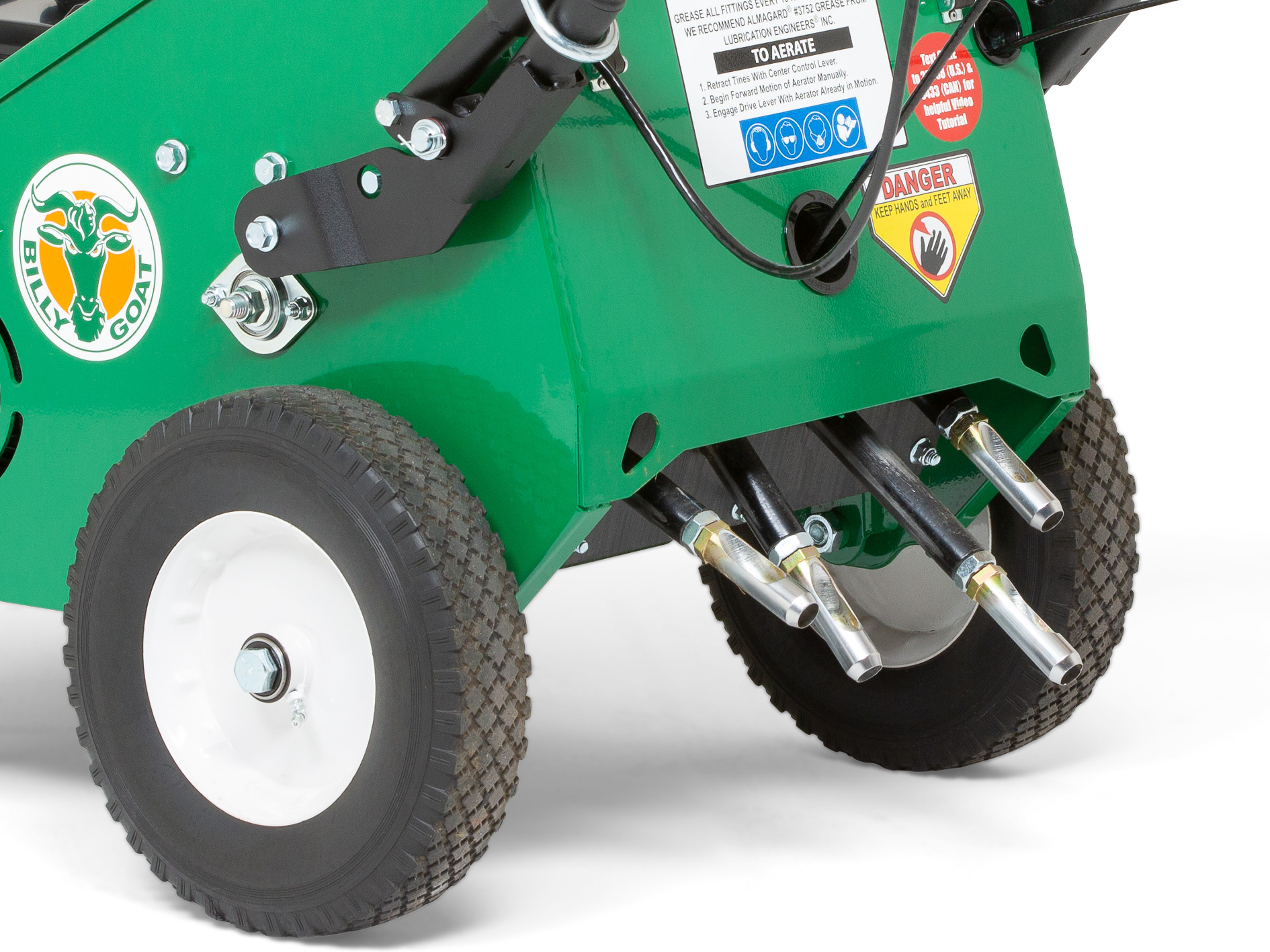
Aerate the lawn
Start by planning your route carefully to ensure you cover the entire lawn efficiently and avoid unnecessary overlap. A single pass is sufficient for most lawns, but heavily compacted areas may require additional passes.
Adjust the depth settings on your aerator according to the soil conditions. For heavily compacted or clay-heavy soil, set the tines to a deeper depth—typically around 6 to 8 cm—to break through the tough surface and improve aeration. For looser or sandy soil, a shallower setting of 3 to 5 cm is usually sufficient to enhance airflow and water penetration without over-disturbing the structure.
Work at a steady, controlled pace The vertical motion of the tines perforates the soil, either removing plugs (hollow tines) or creating channels (solid tines). Adjust the depth settings on your aerator based on soil conditions for the best results.
Clean up
If you use hollow tines, you can clean up the plugs if you prefer your customer’s lawn to look tidy. Alternatively, you can let the plugs break down naturally over time.
Nourish the lawn
After aeration, the soil is primed to absorb nutrients and moisture.This is the perfect time to apply a topdressing—a thin layer of compost or organic fertiliser that enriches the soil and supports microbial activity.
If you are aerating in autumn, consider using a seasonal fertiliser with a higher potassium content. This helps strengthen the grass, making it more resilient against winter conditions. Follow up with thorough watering to ensure nutrients reach deep into the root zone, promoting strong, healthy growth.
Helpful tips for getting the most out of Aeration
Aerate at the right time: For cool-season grasses, aerate in early spring or autumn when the grass is actively growing. For warm-season grasses, late spring to early summer is best. Avoid aerating during periods of drought or extreme heat.
Don’t overdo it: One pass over the lawn is usually sufficient. Focus on high-traffic areas more prone to compaction, but avoid excessive aeration, which can stress the grass.
Choose the right tines: Hollow tines relieve compaction and create deep channels, while solid tines are ideal for regular maintenance. Match your tine choice to the lawn’s needs.
Keep the lawn well-watered: After aeration, the soil is open and ready to absorb moisture. To ensure the lawn doesn’t dry out, water thoroughly after fertilising and overseeding. For the next two weeks, water consistently—once or twice a day—unless there’s sufficient rainfall to support healthy root development.
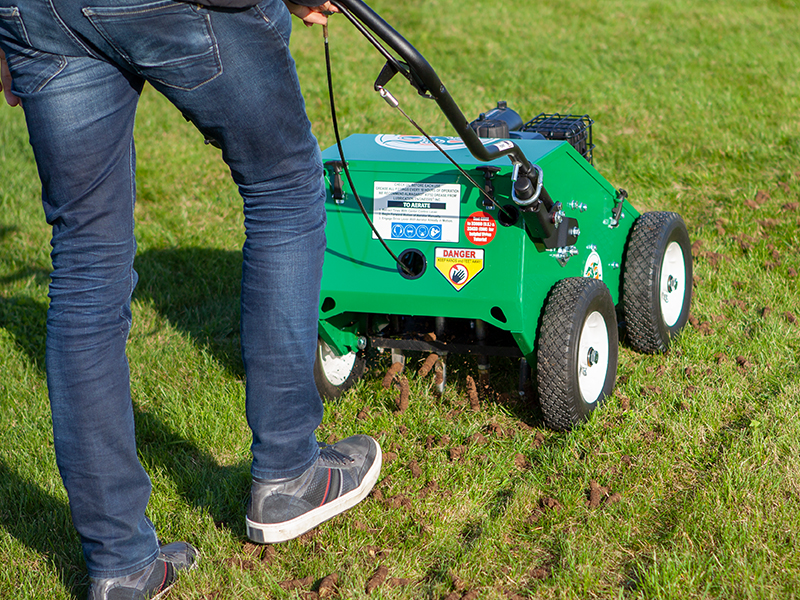
What to expect after aerating
After aerating, your customer’s lawn might look a bit patchy at first, but that’s just proof that the hard work is setting the stage for a healthier lawn. Give it a little time, and you’ll see the transformation take root.
Deeper roots: Grass will develop stronger, more resilient root systems.
Thicker, greener grass: The lawn will thrive with improved access to air, water, and nutrients.
Better drainage: No more water pooling on the surface.
Increased resilience: Aerated lawns are better equipped to handle drought, disease, and heavy use.
Why choose Billy Goat Aerators?
Billy Goat’s range of aerators is designed to make aerating efficient, effective, and accessible for all lawn sizes and conditions. Whether you’re working on a small garden or a large estate, there’s a Billy Goat aerator to suit your needs.
Both options, with easy-to-adjust depth settings, empower you to deliver professional-grade aeration tailored precisely to any lawn's unique needs. Whether you have a small garden or an extensive lawn, these machines put you in control, making high-quality results effortlessly achievable.
Ready to transform any lawn?
Discover the full range of Billy Goat aerators and find the perfect match for your needs.
Aeration is just one part of the ABC of lawn care. Don’t forget about the next steps in the ABC of lawn care: A—Scarifying removes thatch to improve airflow and nutrient penetration, setting the stage for healthier grass growth. Meanwhile, C—Overseeding helps fill bare spots and enhances grass density, creating a lush, uniform lawn that’s resilient and vibrant.
Download the manual
Want to learn more about our aerators? Download the manual for detailed specifications and maintenance tips.
Find a distributor near you
Ready to get started? Find your nearest distributor and take the first step towards a healthier, greener lawn today.




